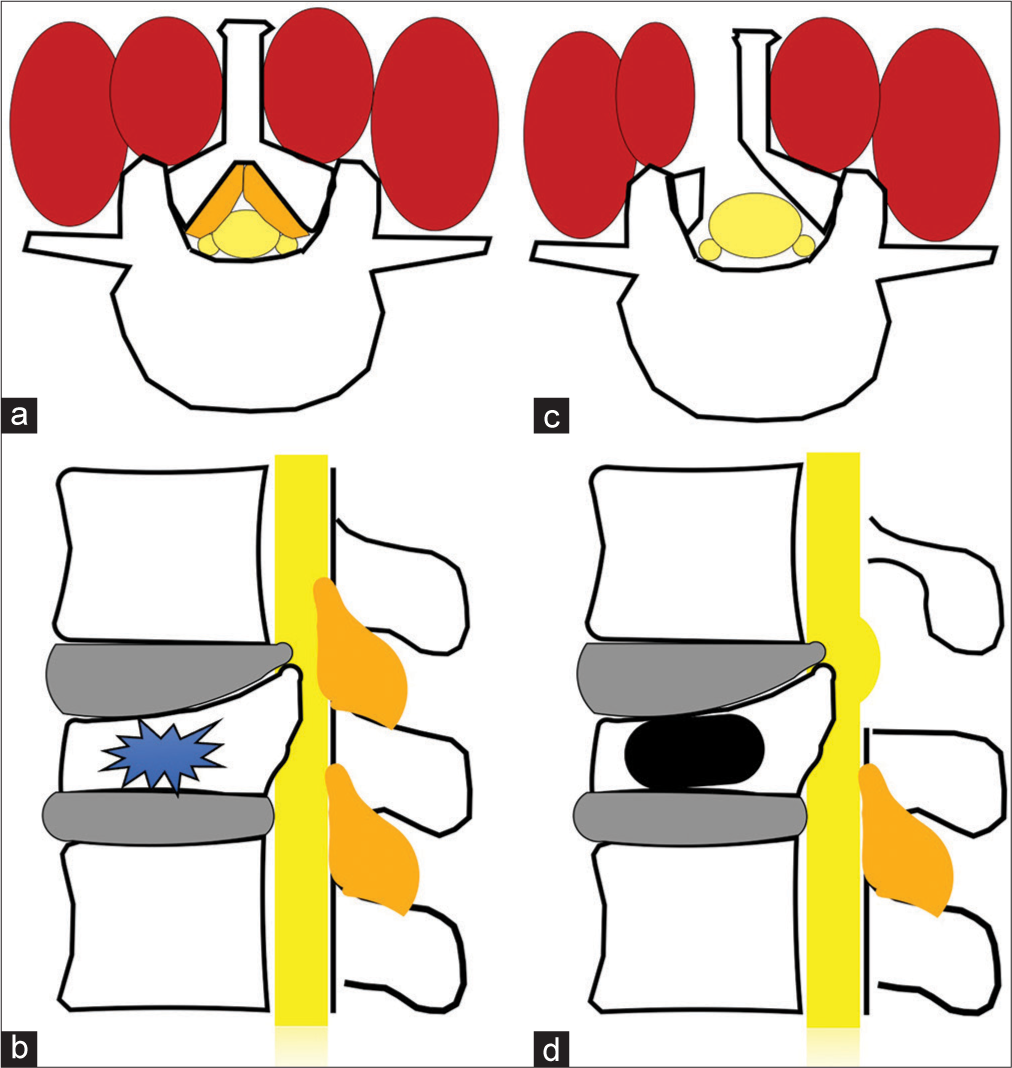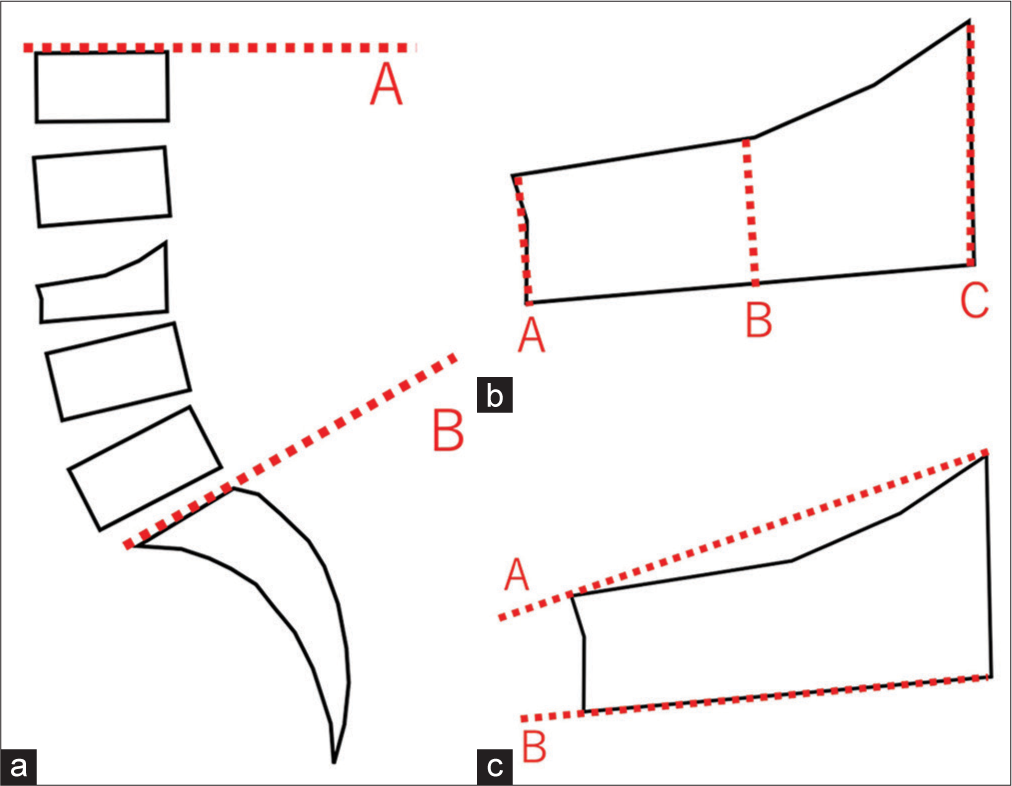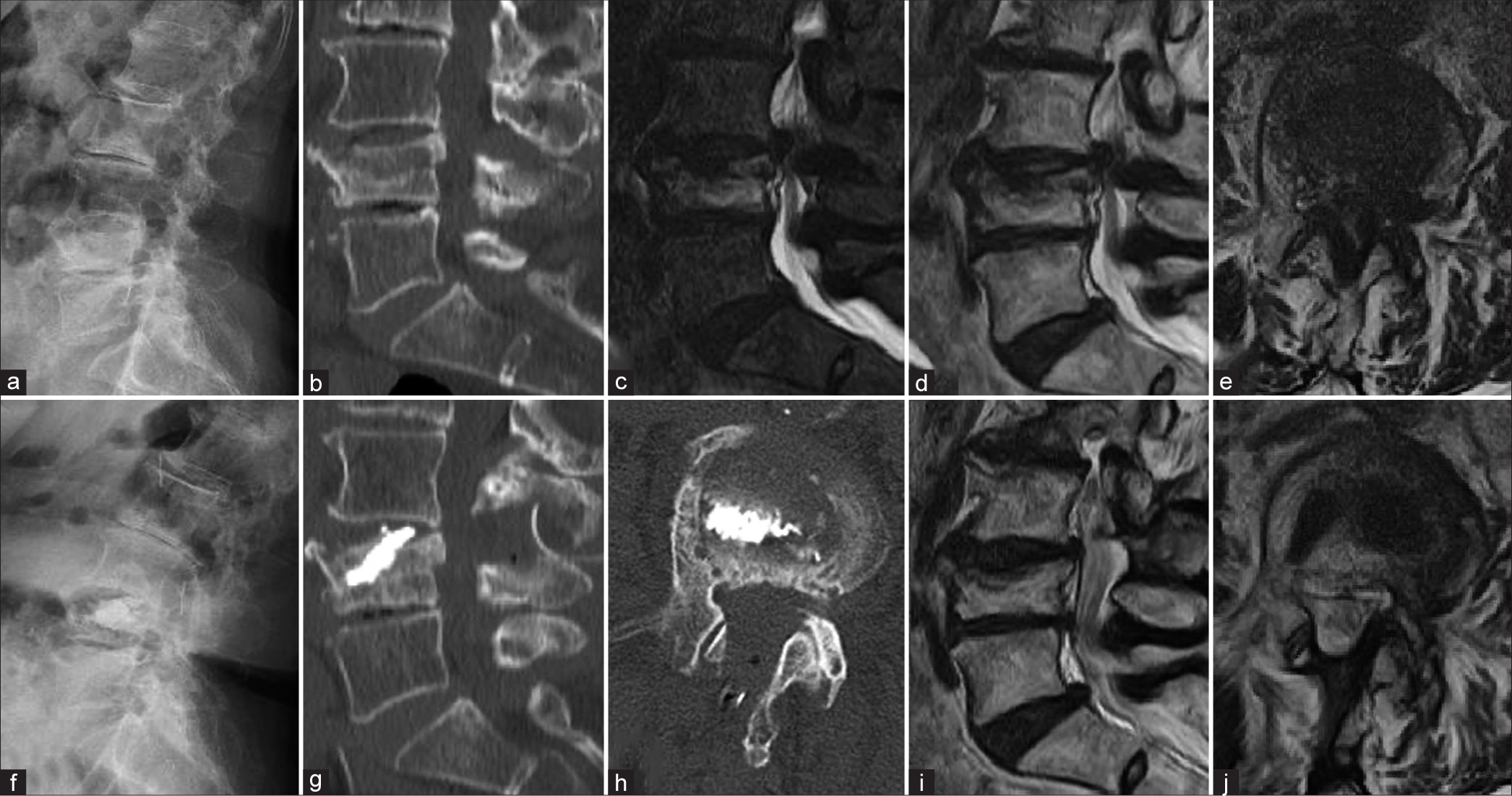- Department of Neurosurgery, Nagoya University Graduate School of Medicine, Nagoya, Japan.
Correspondence Address:
Yusuke Nishimura, Department of Neurosurgery, Nagoya University Graduate School of Medicine, Nagoya, Japan.
DOI:10.25259/SNI_971_2022
Copyright: © 2022 Surgical Neurology International This is an open-access article distributed under the terms of the Creative Commons Attribution-Non Commercial-Share Alike 4.0 License, which allows others to remix, transform, and build upon the work non-commercially, as long as the author is credited and the new creations are licensed under the identical terms.How to cite this article: Yoshitaka Nagashima, Yusuke Nishimura, Motonori Ishii, Tomoya Nishii, Nobuhisa Fukaya, Takahiro Oyama, Takashi Abe, Hiroyuki Kato, Eisuke Tsukamoto, Takafumi Tanei, Ryuta Saito. Unilateral laminotomy for bilateral decompression and balloon kyphoplasty to decompress lumber canal stenosis aggravated by osteoporotic vertebral compression fractures: A technical note. 18-Nov-2022;13:538
How to cite this URL: Yoshitaka Nagashima, Yusuke Nishimura, Motonori Ishii, Tomoya Nishii, Nobuhisa Fukaya, Takahiro Oyama, Takashi Abe, Hiroyuki Kato, Eisuke Tsukamoto, Takafumi Tanei, Ryuta Saito. Unilateral laminotomy for bilateral decompression and balloon kyphoplasty to decompress lumber canal stenosis aggravated by osteoporotic vertebral compression fractures: A technical note. 18-Nov-2022;13:538. Available from: https://surgicalneurologyint.com/?post_type=surgicalint_articles&p=12008
Abstract
Background: The optimal treatment of lumbar canal stenosis (LCS) associated with osteoporotic vertebral fractures (OVFs) remains unclear. Here, we have combined a minimally invasive unilateral laminotomy for bilateral decompression (ULBD) alone with balloon kyphoplasty (BKP) for LCS aggravated by OVF.
Methods: ULBD with BKP was performed in three patients who showed LCS associated with OVFs on MR images with progressive lower extremity neurological deficits. Clinical outcomes were assessed using the numerical rating scale (NRS) and the Japanese Orthopaedic Association (JOA) score. Radiological outcomes were evaluated using multiple parameters (i.e., fractured vertebral body height, lumbar lordosis [LL], and focal angle of the fractured vertebral body).
Results: Over 6 postoperative months, the NRS and JOA scores were clearly improved while radiological parameters remained maintained (i.e., loss of fractured vertebral body height was only 0.3–1.4 mm in all cases). Two of the three cases showed restoration of LL and focal angle postoperatively.
Conclusion: The combination of ULBD with BKP is an effective option for LCS aggravated by OVF.
Keywords: Balloon kyphoplasty, Lumbar canal stenosis, Minimally invasive surgery, Osteoporotic vertebral fracture, Percutaneous cement augmentation
INTRODUCTION
Here, we present a novel minimally invasive surgical technique, consisting of unilateral laminotomy for bilateral decompression (ULBD) combined with balloon kyphoplasty (BKP) for the treatment of lumbar canal stenosis (LCS) aggravated by osteoporotic vertebral fractures (OVFs).
MATERIALS AND METHODS
Eligible patients
Patients with progressive leg pain, numbness, or weakness after OVFs were included in this study. All patients had clear radiological findings of LCS along with neurological symptoms.
Operative technique
With the patient prone under general anesthesia, vertebral stabilization with BKP was performed before lumbar decompression. We, then, performed ULBD using the greenstick fracture method.[
Outcome measures
Clinical outcomes included the use of the numerical rating scale and Japanese Orthopaedic Association scores. Radiological outcomes included assessment of; fractured vertebral body height, lumbar lordosis (LL), and focal angle of the fractured vertebral body [
Figure 2:
(a) Lumber lordosis (LL) was defined as the angle between the tangent lines to the inferior endplates of L1 (A) and superior endplates of S1 (B). (b) Fractured vertebral body height was defined as the mean value of the three measurements at the anterior (A), middle (B), and posterior vertebral body (C). (c) Focal angle is defined as the angle formed by the end plates of the vertebra above the fractured vertebra and below (A, B). Focal angles are presented with minus for kyphosis and plus for lordosis.
RESULTS
Surgical outcomes
The three patients undergoing these showed clear improvement in clinical and radiographic scores 6 months postoperatively [
Figure 3:
Radiological images before and after surgery in illustrative case. (Case 3) An 84-year-old female. Preoperative radiography shows an L4 compression fracture (a), and a sagittal computed tomography scan shows a cleft (b). Magnetic resonance imaging (MRI) with T2 STIR reveals a high signal at L4 (c). MRI T2WI showed severe lumbar canal stenosis at L3/4 (d and e). The patient underwent unilateral laminotomy and bilateral decompression combined with balloon kyphoplasty, which resulted in successful decompression and spinal stabilization (f-j).
DISCUSSION
Surgical treatment for LCS associated with OVFs consists of a variety of surgical techniques; laminectomy, percutaneous cement augmentation including BKP, or highly invasive procedures, such as multilevel posterior screw fixation with interbody fusion and vertebral body replacement. For OVFs, percutaneous cement augmentation should be considered first if neurological symptoms are caused by spinal instability without nerve compression on MRI.[
CONCLUSION
ULBD combined with BKP may be a viable option for LCS aggravated by OVF.
Declaration of patient consent
The authors certify that they have obtained all appropriate patient consent.
Financial support and sponsorship
This work was funded by Japan Society for the Promotion of Science, Grant-in-Aid for Early-Career Scientists 20K17962.
Conflicts of interest
There are no conflicts of interest.
Disclaimer
The views and opinions expressed in this article are those of the authors and do not necessarily reflect the official policy or position of the Journal or its management. The information contained in this article should not be considered to be medical advice; patients should consult their own physicians for advice as to their specific medical needs.
References
1. Awaya T, Nishimura Y, Eguchi K, Nagashima Y, Ando R, Akahori S. Radiological analysis of minimally invasive microscopic laminectomy for lumbar canal stenosis with a focus on multilevel stenosis and spondylolisthesis. World Neurosurg. 2022. 164: e224-34
2. Gimarc D, Jensen A, Lind K, Jesse MK. Radiculopathy following vertebral body compression fracture: The role of percutaneous cement augmentation. Pain Physician. 2020. 23: 315-24
3. Kim DE, Kim HS, Kim SW, Kim HS. Clinical analysis of acute radiculopathy after osteoporotic lumbar compression fracture. J Korean Neurosurg Soc. 2015. 57: 32-5
4. Lin GX, Sun LW, Jhang SW, Ou SW, Chang KS, Tsai RY. A pilot study of radiculopathy following osteoporotic vertebral fracture in elderly patients: An algorithmic approach to surgical management. Geriatr Orthop Surg Rehabil. 2021. 12: 21514593211044912
5. Philips GA, Oshima Y, Inoue H, Kitagawa T, Iwai H, Takano Y. Full-endoscopic spine surgery for radiculopathy after osteoporotic vertebral compression fractures: A case report. J Spine Surg. 2020. 6: 466-71
6. Zhao QL, Hou KP, Wu ZX, Xiao L, Xu HG. Full-endoscopic spine surgery treatment of lumbar foraminal stenosis after osteoporotic vertebral compression fractures: A case report. World J Clin Cases. 2022. 10: 656-62









